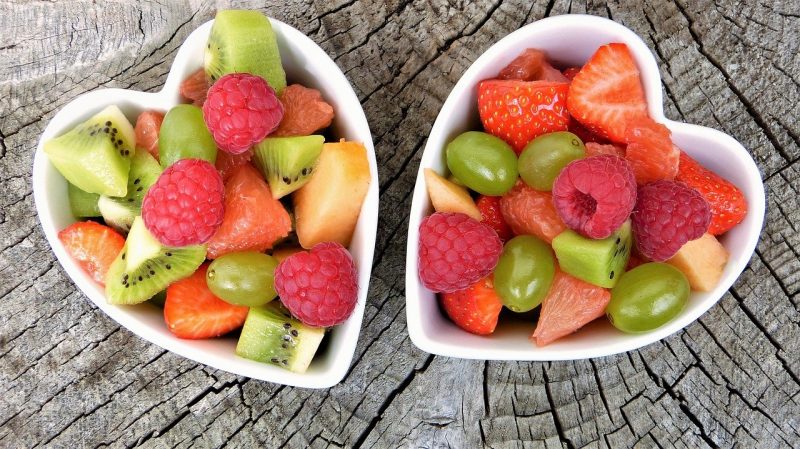Did you know the average American eats over 2,000 pounds of food each year?
Americans are known for their large portion sizes and “super-sized” meals. Huge portion sizes mixed with unhealthy choices are a recipe for weight gain.
So, how can we improve our diet? Keep reading to learn some tips for controlling weight gain and managing your diet!
ADVERTISEMENT |
Easy Ways to Improve Your Diet
Improving your diet can be as easy as changing a few habits.
When we start making habits out of healthy eating, it becomes much easier. Here are some simple ways to improve your diet.
1. Replace Your Vegetable Oil
Many of us have heard that olive oil is a healthier alternative to vegetable oil.
Why is that exactly? Well, olive oil has less fat in it than vegetable oil does. All oils contain a fair amount of fat, so it’s important to find the lowest fat content.
ADVERTISEMENT |
Also, olive oil is natural. Vegetable oil is processed.
If you’re cooking with olive oil, it’s important to be aware of the smoke point.
When you heat the olive oil up enough to create smoke, health-harming compounds form as the nutritional ones fade out. So, replace the olive oil when baking or sauteeing on a lower heat.
You can even learn how to make infused olive oil for a little flavor boost.
2. Load up on Fruits and Veggies
Fruits and vegetables contain vital nutrients that help our body feel energized and function properly.
ADVERTISEMENT |
In addition to fruits and veggies being full of nutrients, they’re also pretty low in calories!
This is why loading your plate up with plenty of fruits and veggies is an easy way to improve your diet. This gives you more wiggle room with what you can eat as an entree.
Try roasting some veggies and then fill your plate halfway with them. Add your main course only after you’ve loaded up on veggies. You’ll notice that this amount of food fills you up but you’re eating fewer calories!
ADVERTISEMENT |
3. Switch Out Empty Carbs for Healthy Grains
Many people believe in eliminating carbs, however, healthy carbs are an important part of our diets.
Healthy carbs contain fiber that is essential for our digestive health. Also, carbs help fill you up so you aren’t hungry again right after a meal.
The key here is choosing healthy carbs. If you’re filling up on cookies, cakes, and white bread, you’re eating massive amounts of carbs and getting no nutritional benefit in return.
ADVERTISEMENT |
Instead of eating carbs that just serve as empty calories, switch to wheat or whole-grain replacements! You can buy wheat pasta, multi-grain bread, and even wheat pizza crust at many supermarkets.
4. Pay Close Attention to Serving Sizes
Most of us consider the serving sizes on labels a suggestion and we choose to ignore them.
Also, many of us see the serving size and think, “Wow! That’s not nearly enough food!” For some people, that may not be. For most, the serving size should be plenty to feel satisfied with some other foods on the side.
ADVERTISEMENT |
For example, if you’re eating pasta, one serving is typically around 1/2 cup. Alone, this isn’t much food at all. Yet, if you pair that small serving of pasta with a side salad and a big helping of roasted veggies, you’re still getting a satisfying meal.
Instead of blindly scooping calorie-dense food onto your plate, try to pay closer attention to the serving sizes. You may just find that this is plenty of food for you and you feel more comfortable after your meal!
5. Cook More Often
On the topic of serving sizes, restaurants often serve portions that are over triple the recommended serving size.
ADVERTISEMENT |
While we may go to a restaurant with intentions of eating a healthy portion size, when we start eating and taste the food it becomes more difficult. Also, the chef may be cooking with heavy amounts of oil and butter that you can’t tell are there.
So, try to save eating at a restaurant for special occasions. You can make smaller portions and know exactly what is going into your meal at home.
6. Prepare Lean Meats
If you’re a meat-lover, try to find leaner cuts and healthier ways to cook them.
Chicken breast, ground turkey, and flank steak are all lean cuts of meat that would make a great addition to your menu. Try baking, broiling, or poaching meat for less fat and calories.
ADVERTISEMENT |
7. Balance Out Your Macronutrients
Macronutrients are the categories of nutrients that we eat on a daily basis.
Carbohydrates, protein, and fat are macronutrients. Having a balance of these categories is essential for getting everything we need from our food. Examples of balanced meals are:
- Avocado toast with a hard-boiled egg and an orange
- Steelcut oatmeal with blueberries, almonds, and chia seeds
- Flank steak with a side salad, brown rice, and roasted broccoli
All of these meals have a good balance of carbs, protein, and healthy fats.
ADVERTISEMENT |
8. Drink a Glass of Water Before Eating
Sometimes when our body needs water we feel like we’re hungry.
If you’re starting to feel hungry outside meal times, have a glass of water to see if that satisfies you. Also, drink water before each meal.
9. Don’t Shop When You’re Hungry
Grocery shopping when hungry is a recipe for disaster!
ADVERTISEMENT |
You’re more likely to grab unhealthy snacks and pre-packaged foods that are full of preservatives and added ingredients if you’re hungry. Buy groceries after you’ve eaten so you can make more conscious decisions.
10. Add Beans to Your Diet
Some people refrain from eating beans because of the gastrointestinal disrupt they can cause.
While this may happen at first, once your body becomes used to eating beans, they serve as a healthy source of protein. They also contain B vitamins and are a heart-healthy food.
ADVERTISEMENT |
Are You Ready to Improve Your Diet?
Improving your diet is as easy as changing a couple of habits.
You don’t need to give your entire diet a makeover. However, adding a few healthy changes will make the world of difference in your overall health.
If you loved this article, browse our online magazine for some more healthy lifestyle tips!
ADVERTISEMENT |






